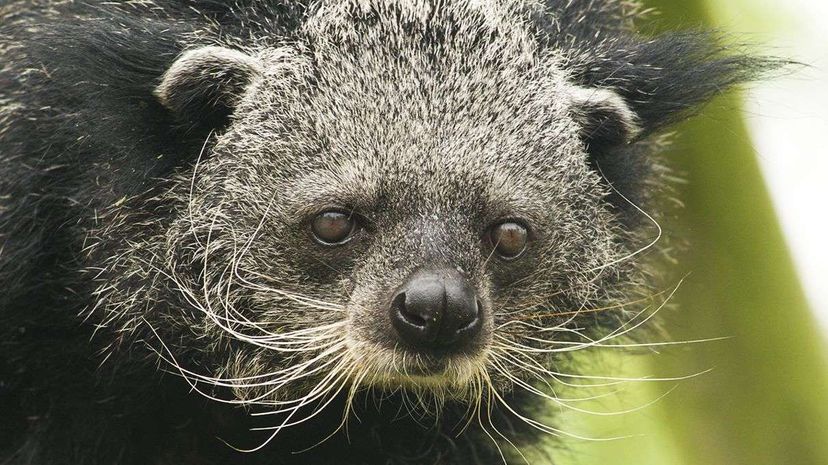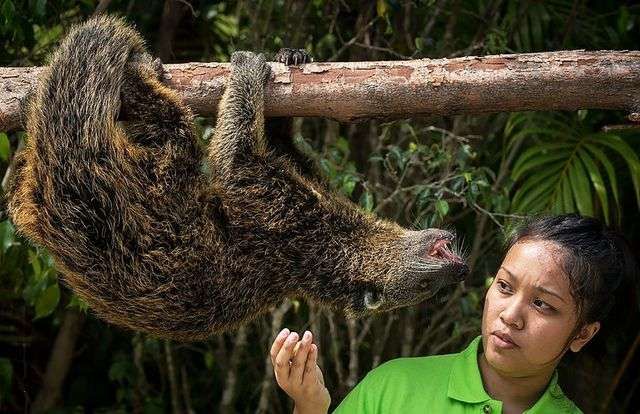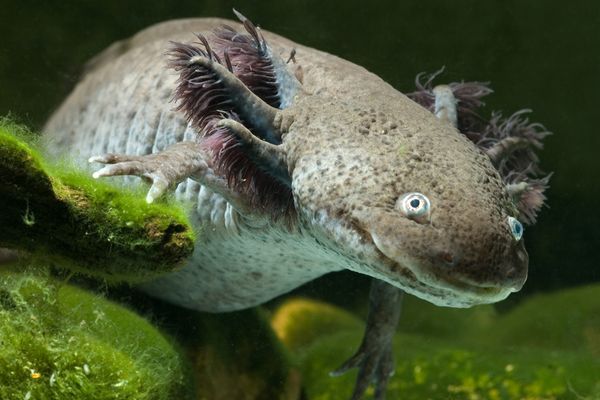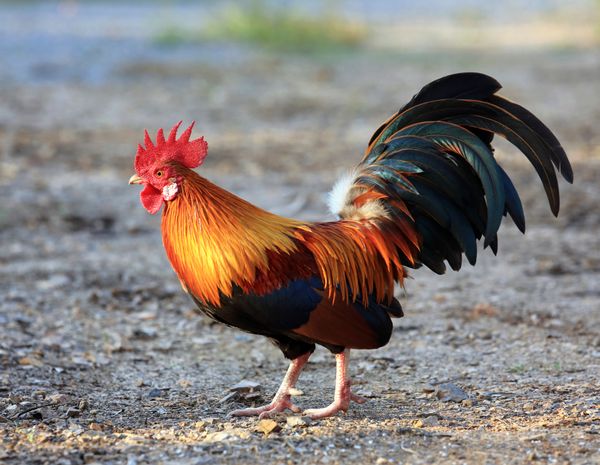
The binturong's a curious animal, and looks something like a cross between a raccoon and a teddy bear. But one of its most striking features is what it smells like — people often say it evokes memories of hot, buttered popcorn.
Imagine machete-hacking your way through the rainforests of Southeast Asia, when all of a sudden, you get a whiff of... a movie theater? Scientists have looked into why this shy, secretive Southeast Asian animal also called the bearcat emits such a strikingly odd smell, but prior investigations into the scent glands of the binturong (Arctictis binturong) turned up empty handed — though uniquely smelly handed, we assume.
Advertisement
Binturongs are distant relatives of cats, part of a family of mammals called vivvirids, which also includes the civet. It has a solid body and bushy tail — and then there's that smell. According to a new study in the journal The Science of Nature, we've discovered just why these jungle creatures smell the way they do — and past researchers looking at the scent gland, located just under the binturong's tail, were in the right neighborhood, but just needed to knock a few doors down. The binturong smells like buttery, delicious popcorn because of a chemical in its urine.
When binturongs pee, they squat, and the urine soaks their feet and tails. This allows them to create a scent trail whenever they move through the rainforests they call home, marking their territory and signaling their locations to other binturongs. Their urine contains the chemical 2-acetyl-1-pyrroline (2-AP), and it's the same compound created in the popcorn-popping process when sugars and amino acids interact. You'll also find 2-AP in freshly toasted bread, or cooked rice.

"If you were to make this compound, you would have to use temperatures above what most animals can achieve physiologically," said Christine Drea, a professor of evolutionary anthropology at Duke who led the study, in a press release. "How does this animal make a cooking smell, but without cooking?"
The researchers thought that perhaps it was something to do with what the bearcats ate — think of your own experiences with asparagus, perhaps — but weren't able to identify any single source. Their current best guess is that the 2-AP is produced when bearcat pee comes into contact with gut bacteria or microorganisms living on binturong skin.
But hey, the bearcat's a cousin of the poop-coffee civet, so who knows. There's apparently all kinds of magic happening inside the guts of Southeast Asian furbeasts.
Advertisement

